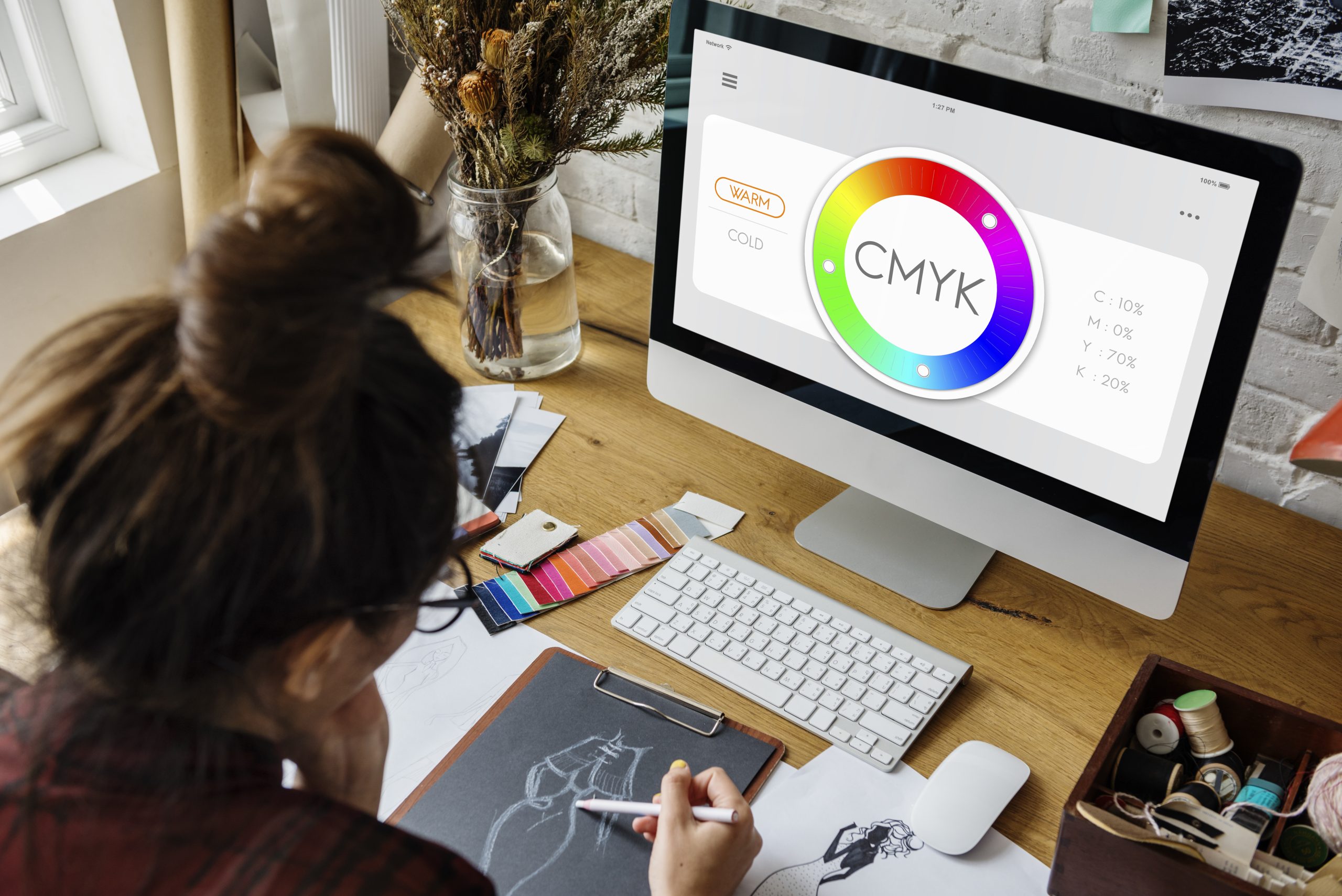Understanding the CMYK printing process is essential for anyone involved in graphic design, commercial print production, or visual branding. The CMYK color model—standing for Cyan, Magenta, Yellow, and Key (Black)—is the standard in color printing because it allows for accurate, high-quality reproduction of images and designs on paper. This guide will explain when and why to use CMYK, how it compares to RGB, and what you need to know about converting files for professional printing.
What is the CMYK Color Model?
The CMYK color model is a subtractive color system used in commercial printing. It works by partially or entirely masking colors on a lighter background, typically white paper. As more color is added, the result becomes darker—hence the term “subtractive.”
The four inks—cyan, magenta, yellow, and black—are combined in various proportions to reproduce a wide range of colors. Unlike RGB (red, green, blue), which is additive and used for digital screens, CMYK is optimized for physical ink and paper.
CMYK vs. RGB: Understanding the Difference
RGB stands for Red, Green, and Blue. It’s the color model used for digital displays, such as monitors, TVs, and smartphones. RGB is an additive model, meaning colors get lighter as you combine them, with white being the combination of all three.
CMYK, on the other hand, is used for printing because it matches how ink behaves on paper. If you send an RGB design to a printer without converting it, the printed result may look drastically different due to differences in how colors are produced in each model.
The Components of Gutenberg’s Press

When to use RGB:
- Web design
- Social media graphics
- App interfaces
- Digital presentations
When to use CMYK:
- Brochures
- Business cards
- Posters
- Packaging
- Any printed materials
Why Printers Use CMYK Instead of RGB
Printers use the CMYK color space because it allows for consistent color reproduction on paper. The ink is applied in layers during the four-color process (also known as process printing), creating thousands of color variations. Each printer, whether offset or digital, has a defined color gamut—the range of colors it can reproduce using CMYK.
Using RGB files in a CMYK workflow can cause issues like:
- Colors appearing more saturated on screen than in print
- Unexpected color shifts
- Loss of detail in dark areas
This is why professionals always convert RGB to CMYK before sending files to print.
How to Convert RGB to CMYK
To ensure accuracy, converting RGB to CMYK should be done early in the design process. This conversion allows designers to work within the limitations of the CMYK color space from the start.
Steps to convert:
Open your design file in Adobe Illustrator, Photoshop, or InDesign.
In Illustrator: Go to File > Document Color Mode > CMYK.
In Photoshop: Convert via Image > Mode > CMYK Color.
Always check the CMYK values for each color used.
Some colors that look vibrant in RGB (especially neon greens and bright blues) may appear duller when printed in CMYK. This is a normal limitation of the subtractive model.
CMYK Color Values and Rich Black
In CMYK printing, true black can be produced in two ways:
- Standard Black (K=100%): Used for body text or small elements.
- Rich Black (e.g., C=60 M=40 Y=40 K=100): Used for large areas of black to avoid looking gray or washed out.
Knowing how to handle black ink properly is essential for clean, professional print results.
Spot Color vs. CMYK Process Printing
While CMYK is the standard, some projects use spot colors, especially when brand consistency is critical. A spot color is a pre-mixed ink used instead of—or in addition to—CMYK. For example, Pantone Matching System (PMS) colors are often used for logos.
Use spot color when:
- Precise color matching is needed (e.g., Coca-Cola red)
- Metallic or fluorescent inks are required
- Only one or two colors are being printed
Use CMYK when:
- Printing full-color images or photographs
- Cost efficiency is a concern
- Versatility across different print runs is needed
CMYK in Commercial and Digital Printing
Modern digital printers and large-scale printing presses rely on CMYK for efficiency. The CMYK printing process involves creating halftone dots of each ink to simulate continuous-tone imagery. These dots are so small that the human eye perceives them as smooth blends of color.
CMYK printing is ideal for:
- High-quality brochures
- Business stationery
- Menus and catalogs
- Direct mail campaigns
- Event posters
Digital printers can also simulate spot colors using precise CMYK mixes, though they may not always achieve the same accuracy as offset press with Pantone inks.
Best Practices for CMYK Printing
- Start in CMYK: When designing for print, set your color mode to CMYK from the beginning.
- Use print-safe colors: Avoid highly saturated RGB-only tones like electric blue or neon green.
- Check your ink levels: Make sure total ink coverage does not exceed printer limits (usually around 300%).
- Use vector formats when possible: Vector graphics preserve quality at any size and allow easier CMYK color editing.
- Embed color profiles: Include ICC profiles for better color management between your file and printer.
- Proof before print: Always request a hard proof when accuracy matters.
Common CMYK Printing Mistakes to Avoid
- Sending RGB files to the printer without converting
- Overusing rich black on fine details (can result in smudging)
- Ignoring bleed and trim marks
- Relying on screen colors as your final reference
- Not discussing color matching needs with your printer
By following best practices and understanding the CMYK model, you’ll avoid these issues and ensure your print projects turn out as expected.
Why CMYK Still Matters Today
Despite advances in technology, CMYK remains the backbone of the printing industry. Whether you’re producing a business card or a 100-page catalog, knowing how to use the CMYK color model effectively ensures your visuals are sharp, consistent, and professional.
If you’re in Miami and need expert assistance with your next print project, the team at Graphic Arts 305 specializes in CMYK printing for a variety of commercial needs. From converting your RGB designs to selecting the best paper and ink, we ensure your final product stands out with true-to-life color and quality.





